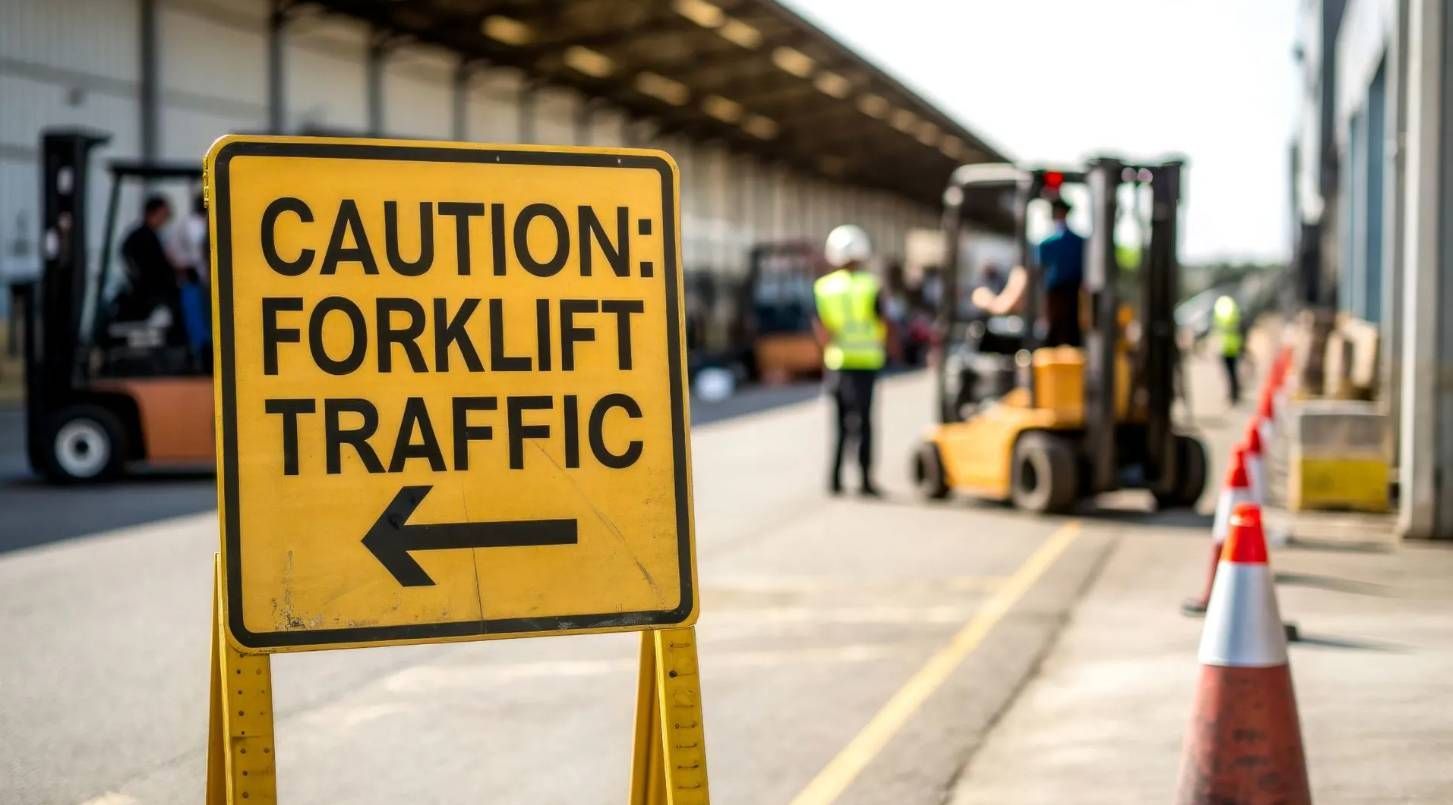Creating a Warehouse Traffic Management Plan

Effective traffic management is essential for warehouse safety. Without clear, documented procedures, the movement of vehicles, forklifts, and pedestrians within busy environments can lead to serious injuries or fatalities. A well-structured warehouse traffic management plan is vital to minimise these risks and ensure a safe workplace for all.
What Is the Traffic Management Plan Process?
The traffic management plan process involves identifying vehicle and pedestrian interactions, assessing associated risks, and implementing strategies to control those risks. This applies especially to warehouses, where forklifts, delivery trucks, and people operate in proximity.
In practical terms, creating a warehouse traffic management plan means clearly mapping out vehicle routes, pedestrian walkways, loading zones, and control systems such as signage and barriers. It also requires setting responsibilities and reviewing the plan regularly to adapt to changes in operations or site layout.
Why Is a Traffic Management Plan Important in Warehouses?
Warehouses are high-risk environments due to the constant movement of heavy vehicles and equipment. Simply having informal safety practices is not enough. Without a formalised traffic management plan:
- Safety measures may be misunderstood or ignored
- Pedestrian and vehicle interactions may go unmonitored
- Training new staff becomes inconsistent
- Emergency responses may be unclear
By implementing a written plan, warehouse managers can ensure everyone – from forklift drivers to contractors – understands and follows the same safety protocols.
In fact, the importance of traffic safety has been highlighted by recent legal cases. For example, workplace manslaughter charges contribute to a Workplace manslaughter case $13.3M haul, underscoring the financial and reputational risks businesses face when safety is not prioritised.

Developing a Warehouse Traffic Management Plan
To be effective, your warehouse traffic management plan should:
- Be developed by a competent person with experience in traffic risk management
- Reflect the specific layout, operations, and risks of your site
- Include input from those who will implement and follow it
The process should begin with a formal traffic management site assessment and hazard identification , including:
- Identifying and recording all vehicle and pedestrian movements
- Reviewing any existing traffic procedures or controls
- Conducting a risk assessment to evaluate the likelihood and consequences of incidents
Key Components of a Warehouse Traffic Management Plan
A robust plan will typically include the following:
- Vehicle travel paths: Clearly marked routes for forklifts, trucks, and delivery vehicles, including entry/exit points, intersections, and crossing zones.
- Pedestrian walkways: Segregated paths for people, clearly marked and protected from vehicle routes.
- Traffic control measures: Signage, barriers, speed limits, and ground markings to guide safe behaviour.
- Emergency procedures: Steps for managing traffic in emergency situations.
- Responsibilities: Clear roles for those managing traffic and those required to interact with vehicles.
- Monitoring and review: A process for evaluating the plan’s effectiveness, especially after an incident or operational change.
Plans should be supported by diagrams and site maps showing vehicle and pedestrian routes and hazard zones signage placement, illustrations to demonstrate traffic flow, including barriers, walkways, signage and safety controls.
Implementation and Training
Creating a plan is only the first step—implementation is key. All workers, contractors, and site visitors must be trained on the traffic management plan and understand their role in maintaining safety. Supervisors should reinforce this through regular communication and site audits.
For training, Zenergy offers an online eLearning Traffic Management for Warehousing Training Program that can be tailored to meet the specific needs of your warehouse or workplace.
Regular reviews are also critical. Your plan should be updated whenever there are changes to site layout, vehicle use, or after a near-miss or incident.

Download Your Traffic Management Plan Checklist
To help you get started, we’ve developed a Traffic Management Plan Checklist that outlines everything you need to consider when developing a plan for your warehouse.
Or, if you need expert support, reach out to Zenergy. We’ve worked with businesses across warehousing, logistics, and construction sites to design and implement tailored traffic management plans that reduce risk and improve safety performance. For more on how we can assist, check out ourTraffic Management for Warehousing page.
Zenergy Can Help
At Zenergy, we’ve delivered traffic management solutions for warehouses, distribution centres, and construction sites across Australia. Our consultants conduct formal Traffic Management Assessments and work with your team to create customised plans that are practical, effective, and compliant with WHS regulations.
For training, our online eLearning Traffic Management for Warehousing Training Program outlines the general obligations and requirements for warehouse traffic management and control measures and developing, implementing and maintaining your traffic management plan.
Contact us today to discuss how we can help create a safer warehouse environment for your people and your business.






